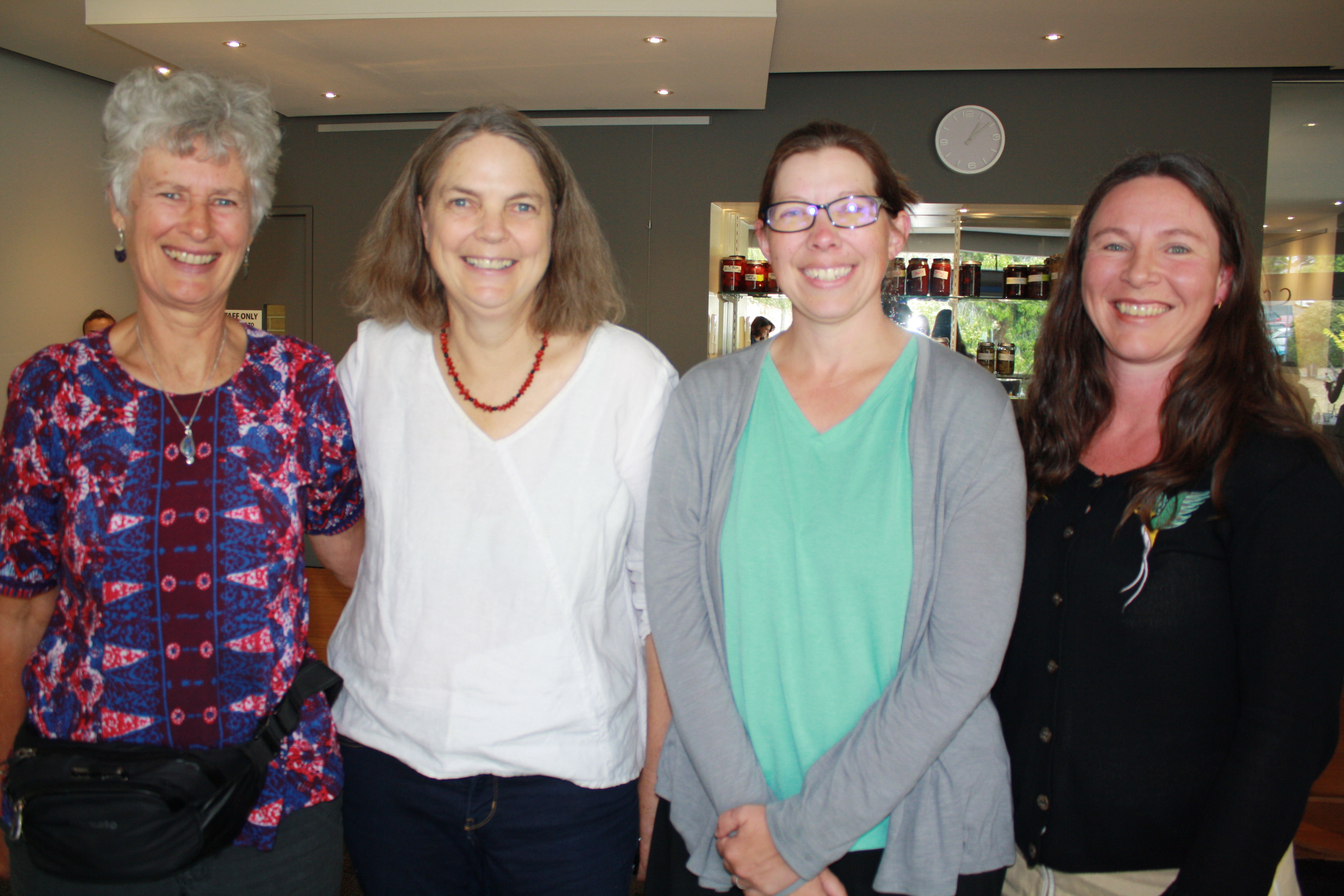A diversity of voices is vital in the bushfire battle

A diversity of voices is vital in the bushfire battle
A gathering of women fire researchers during the Tasmanian bushfire crisis has underlined the growth of research and engagement in fire science at the University of Tasmania. It has also highlighted the importance and positivity that a diversity of voices brings to understanding and managing bushfires.
The lunch gathering was organised by the University’s Fire Centre Research Hub to honour two University of Tasmania scholars, Associate Professor Fay Johnston and Dr Lynda Prior, who in 2018 were recognised among 145 international ‘Women Leaders in Fire Science’ in a research paper in the journal Fire.
Associate Professor Johnston is an environmental health researcher from the Menzies Institute for Medical Research and also a member of the Department of Health response team in the current bushfire crisis. Dr Prior is a fire ecologist with the University’s Fire Research Hub who researches the effects of fire on tree demography and vegetation dynamics. Two visiting female fire academics recognised in the list of ‘Women Leaders in Fire Science’ were also part of the group - Associate Professor Crystal Kolden, a pyrogeographer from the University of Idaho in the US who studies fire disasters and fire management, and Dr Christine Eriksen, a feminist geographer with expertise in wildfire and gender from the University of Wollongong.
The gathering included 18 women working in bushfire research spanning PhD to Professorial career stages and working in social, medical, geographic and biological disciplines. Five other women from Tasmanian Government agencies were unable to attend because of the current bushfire crisis.
The research paper in Fire introduced senior and emerging women researchers in fire from across the globe and in a wide array of subdisciplines within fire science. Associate Professor Kolden, a co-lead author on the paper, said “it is known that women are more greatly affected by natural disasters and there is a need for different perspectives and voices in our discussions on wildfire”. She said the publication of the list of women had increased the exposure in the media of women researchers in this field and helped to bring the researchers together for collaboration.
The paper had noted “a distinct and critical need to increase the recognition of women” in fire sciences and remarked on the low percentage of women being offered oral and plenary talks at fire science conferences.
Associate Professor Kolden said the compilation in no way encompassed all current women leaders in fire science. To quote the paper: “It is merely an attempt to identify some of the prospective role models in fire science and intentionally initiate a scholarly conversation about the perspectives and epistemologies that diversity can bring to the field.”
The breadth of fire research taking place in Tasmania by women is impressive, spanning ecology, environmental health, human geography, law, governance, land use planning, herbivory and spatial science. Of those present at the lunch, specific research areas include the social dimensions of disasters, insurance for extreme weather events, the health impacts of smoke inhalation, bushfire monitoring and mapping, gender equity in wildfire management, preparedness and recovery from extreme events, post-fire restoration, fire in rainforest, climate projections and conservation law.
The gathering underlined the University’s locally based but globally connected strength in fire research. In October last year the Fire Centre Research Hub was set up at the University with the express goal of connecting scientists, managers and communities across Tasmania. The hub’s director, Professor David Bowman, said Tasmania’s many fire experts were spread out across the State and better ways to encourage collaboration needed to be pursued.
The Hub aims to link bushfire researchers to staff in the Department of Primary Industry, Parks, Water and the Environment, the Bureau of Meteorology, the Department of Police, Fire and Emergency Management and the State Emergency Service to respond to their needs with highly relevant research. It also aims to assist communities in preparing for fire and to understand traditional fire management by engaging with the Tasmanian Aboriginal community.
“We are aiming for something that is globally unique in how we engage with others through this hub,” Professor Bowman said. “One of the things we are determined to achieve is a diversity of voices on bushfire issues, which is why we feel it is important to recognise the achievements by these women researchers. But it goes further than that. In addition to all the scientific research that is under way, we want to have conversations about what we can do to improve gender diversity, and general diversity, in wildland fire science.”
Pictured: Four of the women recognised internationally as leaders in fire science . . . Dr Lynda Prior and Associate Professor Fay Johnston, both from the University of Tasmania, with visiting academics Associate Professor Crystal Kolden of the University of Idaho and Dr Christine Eriksen from the University of Wollongong.
Email: